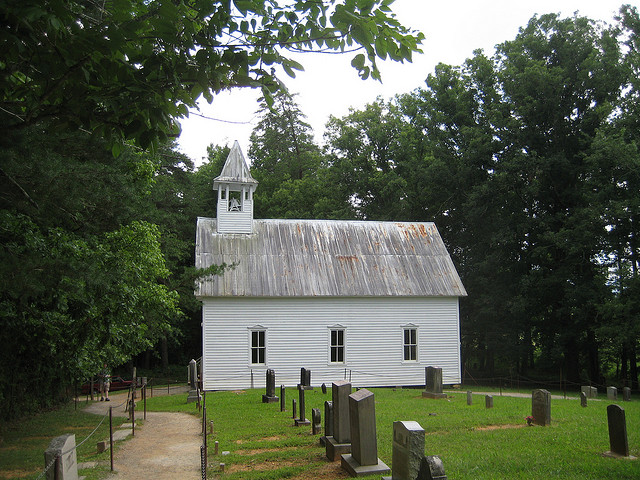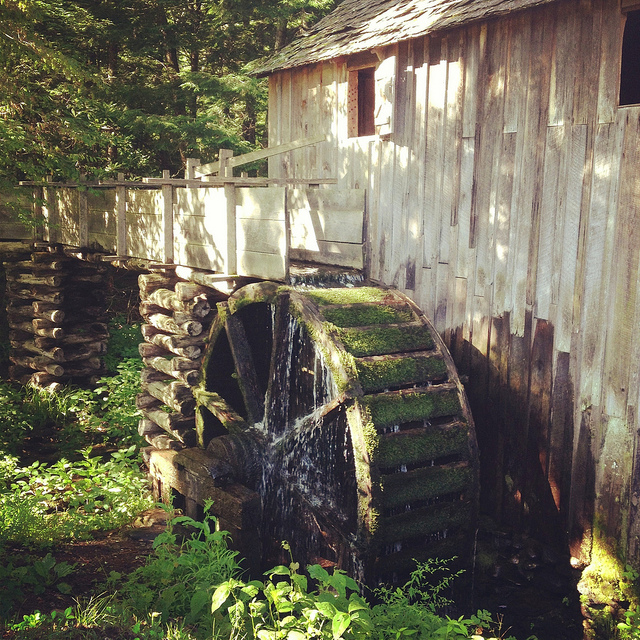Your Guide to Cades Cove in the Smoky Mountains
Located in Great Smoky Mountains National Park, Cades Cove celebrates history by showing visitors what Smoky Mountain life was like in the 1800s. Listed on the National Register of Historic Places, the area attracts millions of visitors annually who look to learn, unwind and enjoy scenic beauty. Want a peek? Here is a quick guide to historic sites along the loop road.
Cades Cove Guide: Things to See, Historical Sites
The 6,800-acre valley offers scenic hiking and horseback trails, as well as places to bike and drive. Take a hike and see Abrams Falls, a waterfall that drops 20 feet into Abrams Creek. Or trek Gregory Bald, one of the area’s most popular trails. Cades Cove also offers anglers ample trout fishing opportunities.
For many, the best way to see the historic area is traveling Cades Cove Loop Road, which lines the bottom of forested mountains and measures 11 miles. This one-way road tours pioneer farms, trails and fields. Driving hours vary, so others can bike or hike the road, so check the schedule when planning a trip. Among the natural sites, see historic buildings where early pioneers lived, worshiped and worked.
Homes in Cades Cove
Oliver Cabin: Built in the early 1820s, this cabin is held together by notches in the wood and its own weight. There are no nails or pegs, and it remained in the Oliver family for more than 100 years before it joined the park.
Elijah Oliver Place: Named for son Elijah, this cabin features a smokehouse, corn crib, springhouse and barn. He also added a “strangers room” to his front porch for travelers and those in need of shelter.
Gregg-Cable House: Home to Becky Cable, a local woman who ran a boarding house and raised gardens, cattle, and food for herself and family.
Carter Shields Cabin: Civil War veteran George Washington “Carter” Shields lived in this cabin from 1910 to 1921. Visitors enjoy blooming dogwoods in the spring.
Tipton Place: Home to Revolutionary War veteran and his family, this two-story home features a smokehouse, woodshed, corn crib, blacksmith shop, cantilever barn and bee apiary.
Henry Whitehead Place: This home is the only square-sawed log home in Cades Cove and Smoky Mountains. It represents the transition from early cabins to modern frame homes.
Historic Churches
Cades Cove Methodist Church: In 1920, carpenter and pastor John D. McCampbell built the two-front door church, which creates a harmonious and sense of peace for those who enter.
Cades Cove Missionary Baptist Church: After the Civil War and many struggles to keep the congregation going, Missionary Baptists were able to build their own place of worship (c. 1894). Due to growth and need, a new church was constructed in 1915.
Working Mills
Cable Mill Historic Area and Visitors Center shows the importance of mills and offers souvenirs, including postcards, books and local products. The Sorghum Mill celebrates this sweet syrup, which is a Southern favorite on cornbread. Another popular attraction is the John P. Cable Mill, which served as one of the few sources of power in the area during the 1800s.
Other Sites
History buffs also enjoy seeing how things work at the Cable Mill Cantilever Barn, various corn cribs, smokehouses and a blacksmith shop, all located in the area.
Find more history and haunted attractions in Gatlinburg!
Want to visit? Find vacation rentals in the Smoky Mountains.



